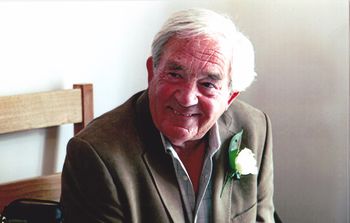Robin Hardisty Lithics Collection
Keith Boughey, 2020. https://doi.org/10.5284/1062854. How to cite using this DOI
Data copyright © Keith Boughey unless otherwise stated
This work is licensed under a Creative Commons Attribution 4.0 International License.
Primary contact
Keith
Boughey
Church Bank
Church Hill
Hall Cliffe
Baildon, W. Yorks
BD17 6NE
Resource identifiers
- ADS Collection: 3524
- DOI:https://doi.org/10.5284/1062854
- How to cite using this DOI
Introduction

Christopher Robin Hardisty was born on 30th December 1935 in Ilkley, West Yorkshire. In 1943 as a boy, he heard about the Late Neolithic/Early Bronze Age ‘cup-and-ring marked’ stones on the local moors, so he decided to explore them. Whilst he was looking, they found his first piece of flint. In the spring or summer of 1944 he decided to explore more seriously. He was introduced to Sidney Jackson, Curator of the then Cartwright Hall Museum in Bradford, who suggested that he explore the moors more thoroughly.
Robin explored both sides of mid-Wharfedale, Rombalds Moor to the south and Black Fell, Blubberhouses Moor, to the north, where he found a fine collection of flint implements. He was to continue flinting for some fifty years. In later life, he moved away to Norfolk which is where, having heard about the collection, the author was able to track him down. He now lives in quiet retirement in Suffolk, where at the time of writing the collection remains in his hands.
Robin kept only the scantest of notes but had large parts of his collection mounted on stout card and labelled with its approximate provenance, but most of the information about the pieces was mainly inside his head. As a result of several head-to-head meetings with him over a period of a few years, the applicant was able to identify, catalogue and photograph the pieces and reconstruct the locations involved. It was as a direct result of these meetings that the current archive was compiled.
Nothing of this collection has ever been published, referred to or even hinted at in any published work. As with so many similar private lithics collections, the intention is to at least bring it into and secure it for the archaeological record which will add to and enhance our understanding of those areas in which the lithics were collected, which in turn should bring it to the attention of both the archaeological community and the wider public, and hopefully even see it or at least some part of it finally published.
The deposition of this archive was funded by the Yorkshire Archaeological & Historical Society and the Open Access Archaeology Fund.





